It was a sunny Saturday morning when we set off early to visit Quarry Bank Mill, one of the finest places to explore Britain’s industrial heritage. Quarry Bank is located on the Styal Estate in Wilmslow close to Manchester Airport and is now owned by the National Trust, further details can be found here.
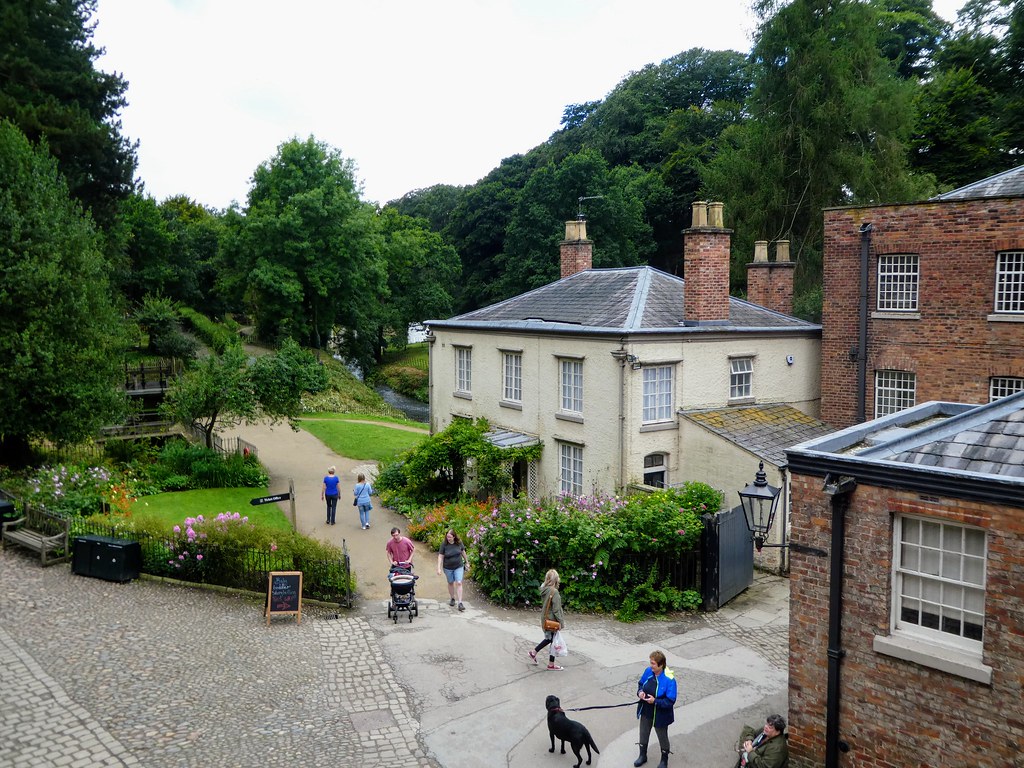
After finding a parking space we walked down the long, steep path towards the ticket office. For those with mobility problems it was good to see a complimentary golf buggy service available to get around the estate. Adult admittance is a hefty £18.20 but is free of charge for National Trust members. Whilst obtaining our tickets we were offered, at no extra charge, a fixed time slot for a guided tour of the Apprentice House. The first available tour was at 2.45 p.m., almost three hours after our arrival time, but with so much else to see and do we found this acceptable.

Picking up a map, we decided to start off by taking a self guided tour around the vast cotton mill. Quarry Bank Mill was constructed in 1790 at the beginning of the Industrial Revolution for Samuel Greg. It was to become the largest cotton spinning mill in the U.K. As we explored the interior of the mill we could hear the clattering sounds of working looms still producing cotton calico, but these sounds would have been even louder when all the machines were working at once.

Staff were on hand to run the spinning mules and weaving looms to give us a feel for what life must have been like as a mill worker during the industrial revolution. The mill’s iron water wheel powered the machinery and overhead shafts above the machines were attached to the water wheel by a belt. This provided the power to operate the mill.
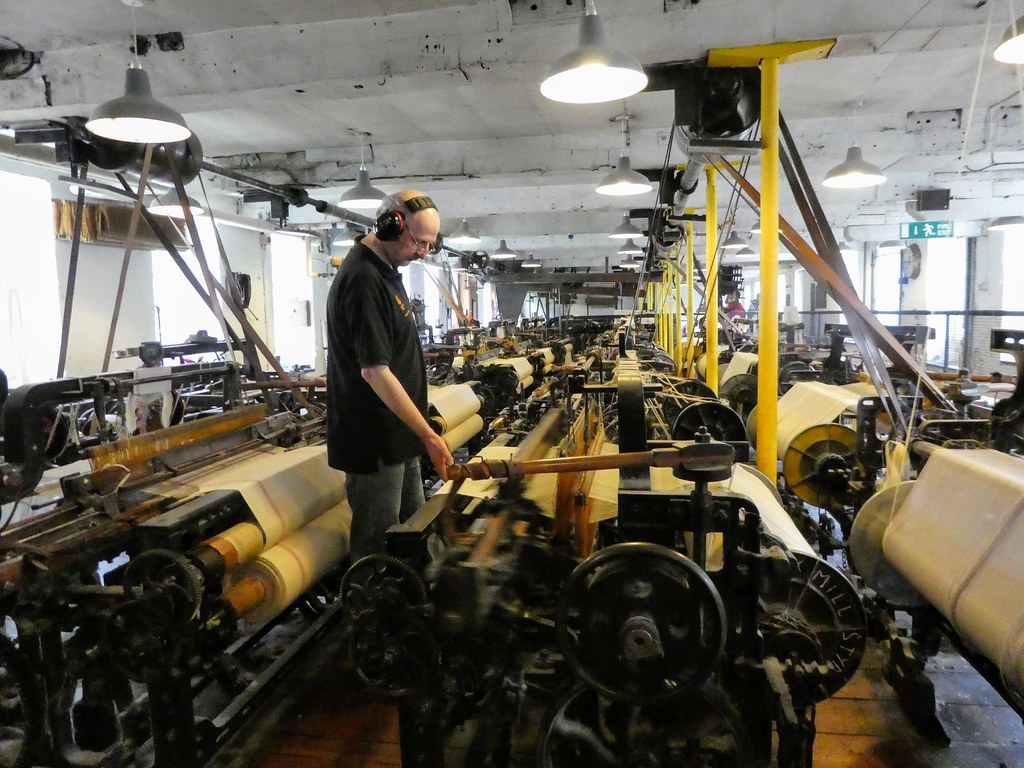
Finishing our tour of the mill we were ready for a short rest so we wandered over to the Mill Cafe which is on the site of the 1830’s weaving shed. The cafe had a pleasant rustic feel and after a refreshing pot of tea we were ready to continue with a walk through the gardens.

We enjoyed strolling alongside the River Bollin which meanders through the Styal Estate passing the mill pond and weir. Next, we explored the pleasure gardens where steep paths climb up from the valley floor. These ornamental gardens were created by Robert Hyde Greg in the 1860’s and contain an abundance of rare rhododendrons.


On reaching the hilltop we entered the walled garden via a gate with a sign requesting it to be kept closed to deter rabbits from entering and eating the crops. This working garden was brimming full of vegetables.
A few minutes before the designated time we assembled outside the garden of the Apprentice House, waiting until our tour guide in period costume rang a large bell welcoming us into the garden. After a short introduction we were escorted into the old school room with its oak tables set out with slates and chalk ready for a lesson. Our informative guide explained that the Apprentice House was built to house the pauper children who worked in the mill.
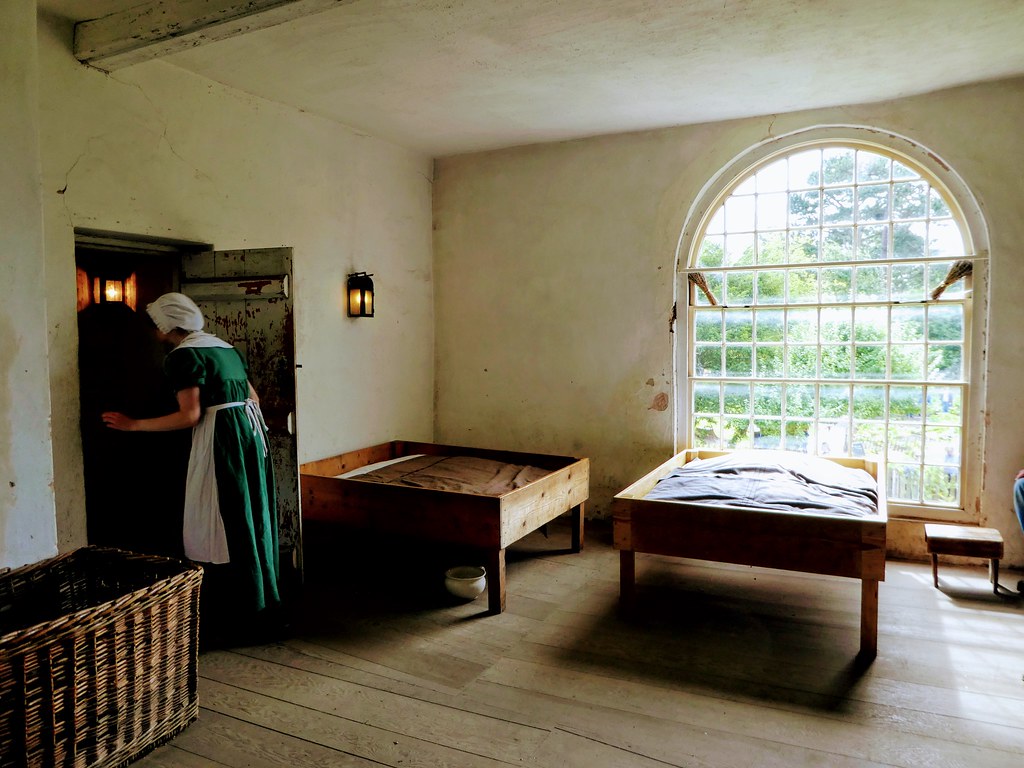
Children could start work at the age of 7 but at Quarry Mill the starting age was usually 9 or 10. Apprenticeships continued until 18 but some girls were kept on until they were 21. We learnt that the day started at 6.00 a.m. with work before breakfast at 8.30 a.m. Breakfast consisted of porridge so thick that it could be eaten in their hands. Work then resumed until lunchtime, when the children could eat and rest for one hour before continuing their unskilled duties.
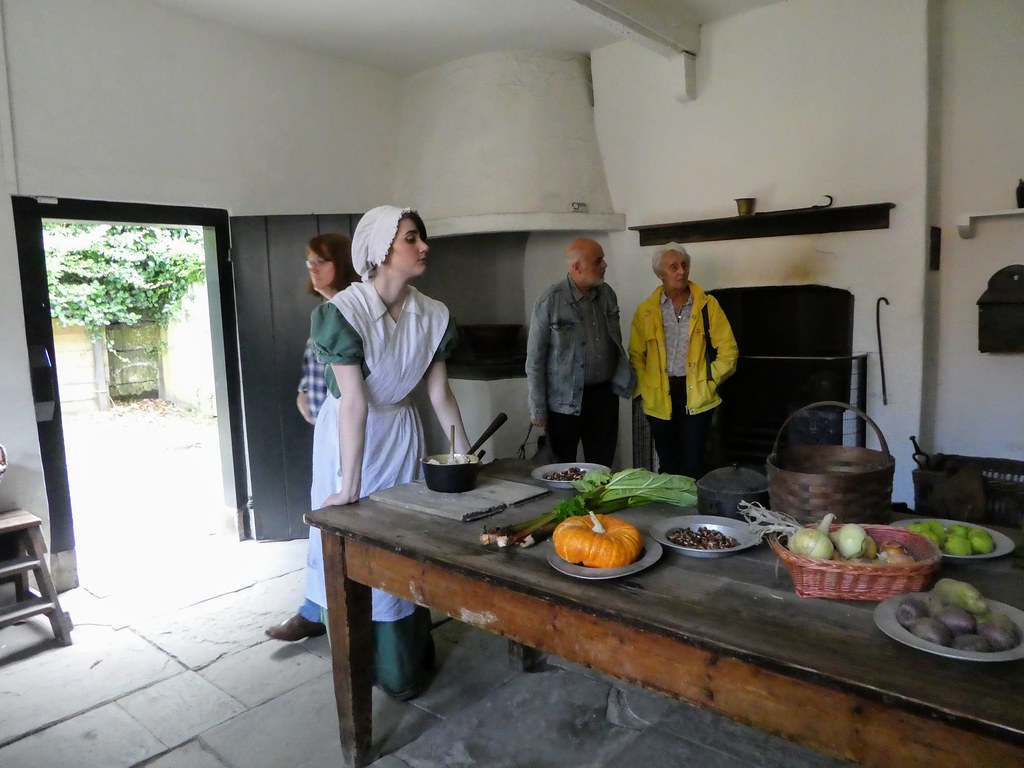
Apprentice work involved doffing the bobbins, moving full drums of cotton from the carding machines and replacing them with empty ones. More hazardous tasks involved piecing – following the moving carriage of the spinning mule, fixing broken threads and cleaning the machine whilst risking getting crushed by the machinery. The children did not receive any wages but were paid 1d per hour for any overtime worked. Their earnings were kept for them so that they had some savings when they started adult life.
After work they completed chores working in the garden and received a basic education three times a week. Girls were also taught basic housekeeping skills such as sewing and cooking. Although life was hard for the children they were treated better than in other mills, were well fed and received medical attention.
After leaving the Apprentice House we had a little look in the National Trust shop where we found lots of beautiful gifts to tempt us. We then returned up the steep slope to the car park to return home after a very interesting day at Quarry Bank Mill.
If you have enjoyed this post you may also like:
The Lion Salt Works & Anderton Boat Lift, Northwich Cheshire
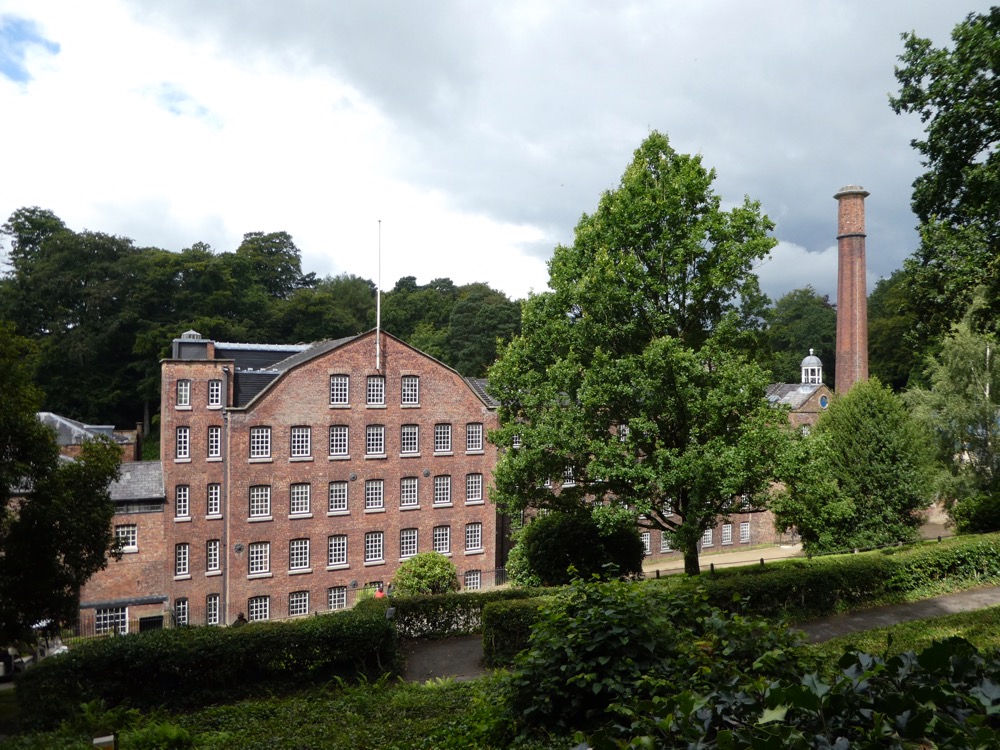

Leave a comment